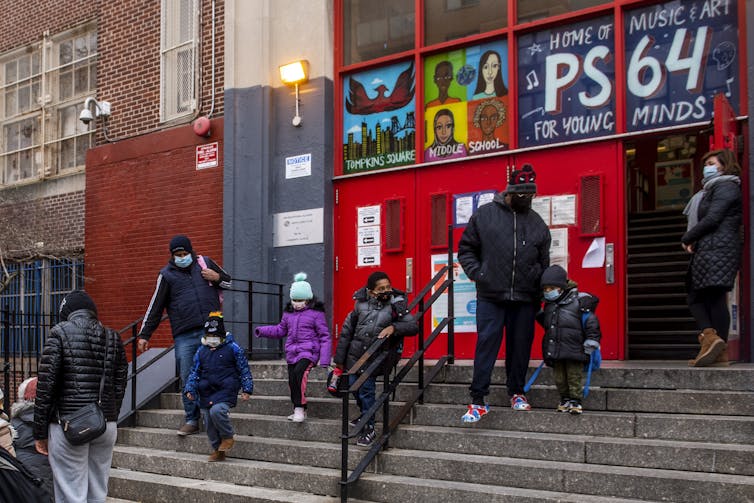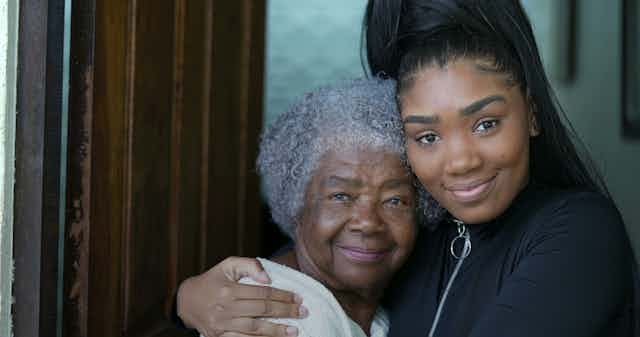Students thrive in environments where they are seen and valued as contributing members of classroom communities.
A major aspect of social development in education is students’ identity formation. At a very early age, students are asked to make connections between what they are learning, their lives and the world around them.
This is about more than just their sense of self. In classrooms, they seek to foster a sense of belonging and acceptance within their school and community, and learn how to negotiate their place in society.
But what happens when learners don’t see themselves reflected in what is being taught or don’t feel a sense of belonging? Very early on, there is disengagement and disconnection. Both can have a lasting negative impact on student achievement and well-being.
I am a researcher focused on African, Afro-Caribbean and Black youth and families’ schooling experiences. If I could do one thing to change elementary education in Canada, I would appeal to school staff to understand the importance of the school-family-community partnership to improve the outcomes of all students.
Go together
There is an African proverb that states if you want to go fast, go alone and if you want to go far, go together. How a community, including a school community, prioritizes the needs of students is critical for their success.
When schools, families, and communities work together as partners, students benefit. The benefits include safer school environments, strengthening parenting skills, encouraging community service, improving academic skills and achieving other desired goals that benefit students.
So, how do we do this partnership?

Learn
As the late cultural theorist and educator bell hooks tells us:
“When teachers teach with love, combining care, commitment, knowledge, responsibility, respect and trust, we are often able to enter the classroom and go straight to the heart of the matter, which is knowing what to do on any given day to create the best climate for learning.”
Teachers are also learners. How effectively they learn is deeply influenced by everyday interactions between their students and themselves.
By taking time to learn about the students in classrooms, teachers gain a greater sense of students’ strengths and areas of need. It also means identifying any barriers that may hinder learning and participation.
Teachers have the opportunity to find out students’ interests, what excites them, and what is important to them and their families. Teachers who are lifelong learners understand that family and community are critical for the growth and development of students.
Affirm student identities
Culturally relevant and responsive teaching provides the framework to build learning environments that are inclusive and honour the lived experiences of learners and their families.
The idea of an inclusive education begins with affirming students’ identity and intersectionalities — the whole of who they are and all facets of their lives. It centres on being concerned with what and how students learn. This simple yet transformative approach can help teachers rethink engaging students.

Knowledge holders are out there
All families and communities are filled with resources and knowledge holders who could support classroom learning.
Their contributions not only build school capacity but respond to the needs of students — especially families of Black, Indigenous and racialized students. Schools can do this by establishing rapport, integrating families’ interests into the classroom and the curriculum and then taking action with them to solve problems together.
When teachers and school staff consider the “family” as participants in a child’s education, they must think about how definitions of family vary across time and cultural contexts. This includes recognizing caregivers such as siblings, grandparents, aunts, uncles, and even community members as kin who often step in to care for children.
Building relationships
Families want to be involved and partner with school staff to ensure success for children and youth. That requires reciprocity and teachers co-ordinating relationships to build a bridge between home and school cultures. Developing such a relationship relies on interdependence, understanding and shared decision-making.
Collaborations with families — especially people that are frequently positioned as passive or absent — will foster supportive and trusting relationships.

Reduce the barriers
Families do not show up in schools the same way. Engaging them only in one way assumes a limited picture of their realities. For example, 2SLGBTQ+ families and newcomers encounter barriers and discrimination.
How might schools make “parent council meetings” more accessible and inclusive? Start with a name change to make these more inclusive to represent the wider spectrum of families and kinship in real-world communities.
Such spaces are where community members might gain a deeper understanding of what is happening within the school. Yet “parent council” meetings are often poorly attended, for various reasons — time, lack of child care, limited connection to the school community, dealing with racism and discrimination, and so on.
Invest in outreach
Learn what days, times, and methods of communication are preferred. The pandemic opened our eyes to many possibilities and creative ways to communicate. Learn what strategies work best. Schools should be willing to change.
Read more: 5 ways school boards can address racial injustice
Ask questions and actively listen. Discuss values and develop an understanding of how experiences of racism, power and classism play out in a school setting and affect communication and interaction.
To get a better understanding of the school climate and the concerns of families and students, schools or boards must offer opportunities for people to share their ideas. As an example, how could surveys, information materials available in multiple languages and mediums and even a commitment to auditing curricula interrogate what is maintained as normative culture in our schools?
Oftentimes, there is a lack of a shared vision on how to support students. But there is a greater impact on the family as a whole when family are seen as important partners in supporting the overall development of their child.
Arianna Lambert, a passionate elementary school teacher and educator, co-authored this article.

